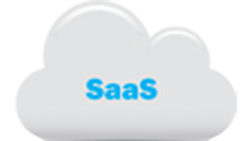Since the rise of companies like Salesforce.com, businesses have debated whether to buy on-premise software or to subscribe to Software-as-a-Service (SaaS) alternatives.
While many organizations still go with on-premise based on perceived cost alone, the market is quickly headed in the other direction. In fact, Gartner expects SaaS adoption to far outpace market growth through 2015.
While total economics are a major consideration in this decision, there are several other tangible and intangible benefits of choosing SaaS and moving to the cloud that companies often overlook because they don’t take into account the real cost of on-premise software that accumulates over time.
In addition, in recessionary times, many companies cannot wait several months for expensive and time-intensive deployments that software requires. On-premise software can take 18 to 24 months to implement whereas SaaS-based applications can take as little as 30 days.
With more affordable setup, SaaS-based applications minimize companies’ investment risk and are easy on their cash flow. Now more than ever, companies need access to the latest innovations right away to make better business decisions.
To further explain the factors that companies should consider when embarking on a software purchase decision, Zilliant recently revealed five reasons why companies should move to the cloud and consider switching to SaaS.
Five Reasons to Move to the Cloud
1. Less Resource Costs:Companies often underestimate the costs for software support, network monitoring, management tools and periodic hardware upgrades. Gartner estimates that the annual cost of owning and managing software applications can be as much as four times the cost of the initial purchase, or license price. In fact, companies can spend up to 75% of their total IT budget just to maintain and run existing systems and infrastructure. With cloud-based applications, internal resource costs are minimized, further adding to their economic advantage.
2. Access to Innovation:Once you buy on-premise software, the technology immediately begins to age. Getting the latest innovation requires a time-intensive and costly upgrade and is typically not available for at least a year. With SaaS, you will always be on the most recent version, with immediate access to new capabilities and features as they become available. There are no delays waiting on software updates because SaaS isn’t tied to internal IT bandwidth. Ultimately, your subscription will actually appreciate over time, giving you even more value.
3. Focus on Customer Success:On-premise software vendors get large up-front license fees, and after deployment it becomes your responsibility to maintain the software going forward, unless you invest in a maintenance contract. The ongoing maintenance is time consuming and costly. On the other hand, SaaS vendors are financially motivated to ensure your ongoing success. Their entire business model of recurring revenue is dependent upon your satisfaction and usage. This incentivizes SaaS vendors to build a collaborative relationship to ensure you derive real value from the application. You also benefit from a lower cost of customer support, as there is no need to involve your IT department with software issues.
4. Ease of Implementation:If you have been through a major on-premise software implementation, you understand that these implementations can take upwards of a year or more. On-premise applications typically require a significant amount of custom coding, new infrastructure to support longer-term growth and can pose potential integration challenges with other systems. SaaS applications require less coding, are simple to scale as your business needs change, are easily configurable and have more flexible integration options. Ultimately, SaaS deployments can be live in as little as 30 days.
5. Ability to Test Drive: When it comes to software, many companies make purchase decisions without a good understanding of the value the software will deliver to their business. They make a large up-front investment in the form of a capital expenditure, without test driving the system first —a risky move for such a large, high-profile expense. Most SaaS applications provide companies with trial versions to test the application first and ensure there is business value in the application.
Ultimately, when making the decision between on-premise software and SaaS, it’s important to factor in all potential future costs and maintenance, not just the cost of the initial license.
Pete Eppele brings over 18 years of product strategy experience, helping companies harness Big Data to improve business performance. As Vice President of Product Management at Zilliant, Pete is responsible for defining the product lifecycle and requirements for Zilliant’s products.
